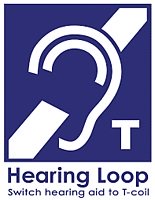As an audiologist, you know the most basic, yet important, facts about how hearing aids work: microphones always pick up what’s closest and loudest. This means that microphones can’t differentiate what sound or whose voice is of the most importance to the wearer.
So, when a patient complains that they have a difficult time understanding what the commentators are saying during football games, or how they would enjoy watching movies much more if they could hear the actors’ dialogue above the background music and sound effects, what can you do? You can discuss the advantages of having hearing aids equipped with a telecoil. They may ask you about Bluetooth-enabled hearing aids, but that type of wireless technology is best in one-on-one situations and not as effective in larger venues.
Also referred to as a “t-coil” or “t-switch”, a telecoil is a very small coil of wire that is wrapped around a core. Its purpose is to induce an electric current in the coil when it is in proximity of a charging magnetic field, such as a hearing loop. Today, more and more public venues are leveraging these hearing loops in their building designs, making telecoils an effective technology to help people hear better in such environments.
When speaking with a new patient, you need to learn as much as possible about their lifestyle. If they are churchgoers, movie and live theater aficionados, or travelers, they should invest in a hearing aid that includes telecoil technology. Once an afterthought, “t-coils” are now the most valuable and compatible accessory a hearing aid can have for people who need to rely on assistive listening systems, and for those who frequent venues required by the Americans with Disabilities Act (ADA) to provide hearing accommodation.
HEARING LOOPS ARE THE LEADING CHOICE FOR HEARING ACCOMMODATION
Hearing loops, made of hidden copper wire, that are installed to the IEC 60118-4 standard (International Electrotechnical Commission) reportedly deliver the cleanest sound to people with mild to severe, and even profound, hearing loss. Some of the nation’s most famous locations are hearing loop equipped, including the Museum of Modern Art (MoMA), New York’s busy and noisy Penn Station, Amtrak’s Union Station in D.C., and many more. If you want to assist your patients in finding venues that have assistive listening devices installed, visit www.aldlocator.com, type in a ZIP code, and a list of entertainment, worship, theater, and educational facilities in the proximate area will be noted.
TELECOIL-ENABLED HEARING AIDS ARE DISCREET, EASY-TO-USE, AND PRACTICE GOOD HYGIENE
That tiny coil of wire induces an electric current when in the presence of a changing magnetic field (the hearing loop), and it can make a huge difference in a patient’s life. With a telecoil installed in their hearing aids, they no longer need to rush to the symphony concert to arrive early enough to get one of the available assistive listening devices. The technology needed to clearly hear the music is in their hearing aids.
THE TELECOIL, IN LARGE SETTINGS, HAS PROVEN, POSITIVE RESULTS
A study reported by Hearing Review in 2014 asked 866 adult wearers of telecoil-equipped hearing aids and cochlear implants to rate their overall ability to understand speech in places of worship, in theaters and auditoriums, and during meetings in conference rooms. Fewer than 14 percent rated their ability to hear without a hearing loop above a 7. However, when listening in a looped area, 86 percent rated their experience between 8 and 10.
BLUETOOTH + TELECOIL = THE BEST OF BOTH WORLDS
Bluetooth technology enables your patients to distinguish vocal sounds over the phone. They can program their hearing aids to directly pick up the sound from their television and other sources. But, when it comes to the larger world of out-of-home venues, the insertion of a telecoil in their hearing aids allows them to take advantage of assistive listening technology like never before.
Any venue offering hearing loop technology is now a welcoming environment. Yes, a telecoil can be accessed through a wireless streamer that is worn around the neck and dedicated to picking up (streaming) sound from three major sources: TV, phone, and microphone. However, it is so much more convenient and easier to use if you install the t-coil as a program in their hearing aids. You can activate the program at the time of fitting and explain the uses and benefits.
Once you do that, every time your patients visit a public place displaying this symbol:

they will know you have their best interests at the forefront of your practice.